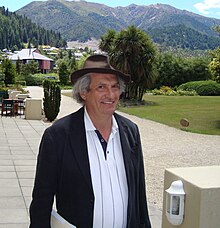
Robert Sedgewick is an American computer scientist. He is the founding chair and the William O. Baker Professor in Computer Science at Princeton University and was a member of the board of directors of Adobe Systems (1990–2016). He previously served on the faculty at Brown University and has held visiting research positions at Xerox PARC, Institute for Defense Analyses, and INRIA. His research expertise is in algorithm science, data structures, and analytic combinatorics. He is also active in developing the college curriculum in computer science and in harnessing technology to make that curriculum available to anyone seeking the opportunity to learn from it.

Arne Carl-August Beurling was a Swedish mathematician and professor of mathematics at Uppsala University (1937–1954) and later at the Institute for Advanced Study in Princeton, New Jersey. Beurling worked extensively in harmonic analysis, complex analysis and potential theory. The "Beurling factorization" helped mathematical scientists to understand the Wold decomposition, and inspired further work on the invariant subspaces of linear operators and operator algebras, e.g. Håkan Hedenmalm's factorization theorem for Bergman spaces.
Herman Ole Andreas Wold was a Norwegian-born econometrician and statistician who had a long career in Sweden. Wold was known for his work in mathematical economics, in time series analysis, and in econometric statistics.

Béla Bollobás FRS is a Hungarian-born British mathematician who has worked in various areas of mathematics, including functional analysis, combinatorics, graph theory, and percolation. He was strongly influenced by Paul Erdős since the age of 14.
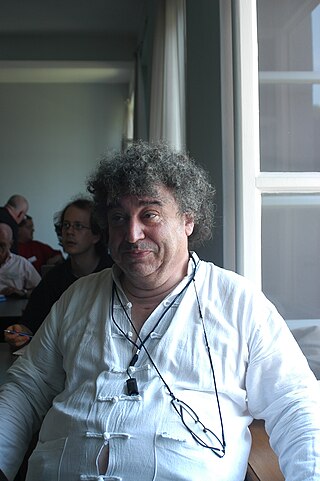
Philippe Flajolet was a French computer scientist.
Johan Torkel Håstad is a Swedish theoretical computer scientist most known for his work on computational complexity theory. He was the recipient of the Gödel Prize in 1994 and 2011 and the ACM Doctoral Dissertation Award in 1986, among other prizes. He has been a professor in theoretical computer science at KTH Royal Institute of Technology in Stockholm, Sweden since 1988, becoming a full professor in 1992. He is a member of the Royal Swedish Academy of Sciences since 2001.
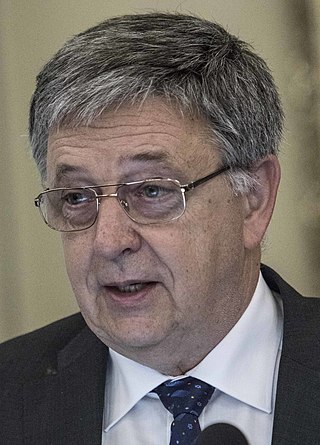
László Lovász is a Hungarian mathematician and professor emeritus at Eötvös Loránd University, best known for his work in combinatorics, for which he was awarded the 2021 Abel Prize jointly with Avi Wigderson. He was the president of the International Mathematical Union from 2007 to 2010 and the president of the Hungarian Academy of Sciences from 2014 to 2020.

Lennart Axel Edvard Carleson is a Swedish mathematician, known as a leader in the field of harmonic analysis. One of his most noted accomplishments is his proof of Lusin's conjecture. He was awarded the Abel Prize in 2006 for "his profound and seminal contributions to harmonic analysis and the theory of smooth dynamical systems."
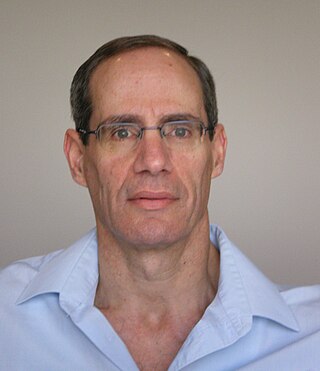
Noga Alon is an Israeli mathematician and a professor of mathematics at Princeton University noted for his contributions to combinatorics and theoretical computer science, having authored hundreds of papers.
Olav Kallenberg is a probability theorist known for his work on exchangeable stochastic processes and for his graduate-level textbooks and monographs. Kallenberg is a professor of mathematics at Auburn University in Alabama in the USA.

Oleg Yanovich Viro is a Russian mathematician in the fields of topology and algebraic geometry, most notably real algebraic geometry, tropical geometry and knot theory.
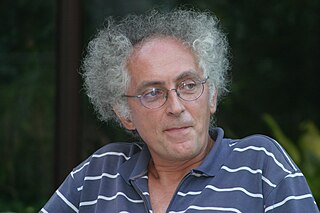
Luc P. Devroye is a Belgian computer scientist and mathematician and a James McGill Professor in the School of Computer Science of McGill University in Montreal, Quebec, Canada.
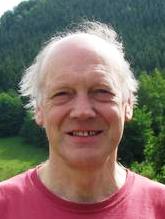
Geoffrey Richard GrimmettOLY is an English mathematician known for his work on the mathematics of random systems arising in probability theory and statistical mechanics, especially percolation theory and the contact process. He is the Professor of Mathematical Statistics in the Statistical Laboratory, University of Cambridge, and was the Master of Downing College, Cambridge, from 2013 to 2018.
Carleson's theorem is a fundamental result in mathematical analysis establishing the pointwise (Lebesgue) almost everywhere convergence of Fourier series of L2 functions, proved by Lennart Carleson (1966). The name is also often used to refer to the extension of the result by Richard Hunt (1968) to Lp functions for p ∈ (1, ∞] and the analogous results for pointwise almost everywhere convergence of Fourier integrals, which can be shown to be equivalent by transference methods.
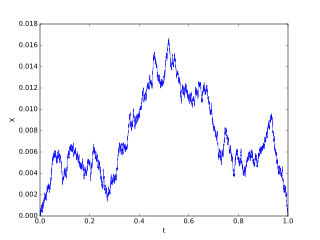
In probability theory a Brownian excursion process is a stochastic process that is closely related to a Wiener process. Realisations of Brownian excursion processes are essentially just realizations of a Wiener process selected to satisfy certain conditions. In particular, a Brownian excursion process is a Wiener process conditioned to be positive and to take the value 0 at time 1. Alternatively, it is a Brownian bridge process conditioned to be positive. BEPs are important because, among other reasons, they naturally arise as the limit process of a number of conditional functional central limit theorems.
Carl-Gustav Esseen was a Swedish mathematician. His work was in the theory of probability. The Berry–Esseen theorem is named after him.
Bertil Gustafsson is a Swedish applied mathematician and numerical analyst. He is currently a Professor emeritus in the Department of Information Technology at Uppsala University, Sweden. Gustafsson is known for his work in numerical methods for time-dependent partial differential equations and its applications in fluid dynamics. He is the G in GKS (Gustafsson–Kreiss–Sundstrom) theory for initial-boundary value problems which discusses the stability criterion for numerical approximations of initial–boundary value problems. Gustafsson has also authored a couple of books on the topic numerical methods applied to PDE.
Michael Benedicks, born 1949, is a Professor of Mathematics at the Royal Institute of Technology (KTH) in Stockholm, Sweden.
Nikolai Georgievich Makarov is a Russian mathematician. He is known for his work in complex analysis and its applications to dynamical systems, probability theory and mathematical physics. He is currently the Richard Merkin Distinguished Professor of Mathematics at Caltech, where he has been teaching since 1991.
Kurt Johansson is a Swedish mathematician, specializing in probability theory.


